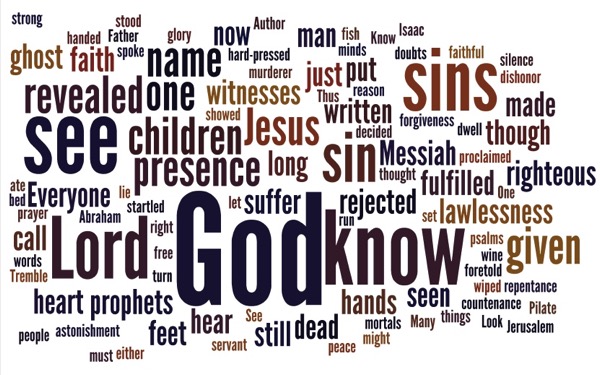3 Easter
Saint Peter labors to show his contemporaries that God’s messianic promise to Israel has been fulfilled in Jesus: “The God of Abraham, the God of Isaac, and the God of Jacob, the God of our ancestors has glorified his servant Jesus.” First John points us beyond the horizon of our present knowing: “Beloved, we are God’s children now; what we will be has not yet been revealed.” The hope for our own transformation lies in some new and future glory, to be revealed in the glorified Christ: “What we do know is this: when he is revealed, we will be like him, for we shall see him as he is.”
But in the Gospel of Luke, the Resurrection is very much in the present. It’s not hard to imagine this passage as the scene of a dramatic reunion in a movie. The disciples are collecting themselves in the aftermath of Jesus’ seeming defeat and death. You can’t really hear what they are saying as they talk quietly, and the hush adds a sense of drama or tension. And then there he is: “Jesus himself stood among the disciples and their companions and said to them, ‘Peace be with you.’”
But his appearing to them does not bring the disciples comfort at first: “They were startled and terrified, and thought that they were seeing a ghost.” Maybe you can imagine yourself in your own impossible reunion. The disciples tingle with joy and doubt at the same time. He touches them, and invites their touch in return. A happy reunion takes its unmistakable shape, smiles popping up visibly in the small assembly of bobbing faces mobbing the Lord. Hands clap backs and shoulders. And then he asks, “Do you have anything to eat?” A little levity to cut the tension, and we cut the scene.
But this story of Jesus’ Eastertide appearance isn’t really the story of an unexpected reunion, a connection impossibly remade from beyond the grave. Jesus was not a ghost, not even a friendly one — and that really is the point of the story. Neither “Jesus still lives in your hearts” nor “Death cannot separate you from Jesus’ love” can summarize these Resurrection appearances, nor the Church’s faith. “Let us not mock God with metaphor,” warns John Updike in his forceful poem, “Seven Stanzas at Easter.”
“Make no mistake: if He rose at all / it was as His body; if the cells’ dissolution did not reverse, the molecules / reknit, the amino acids rekindle, / the Church will fall.”
This elementally corporeal act — eating — was meant to show the physicality of his appearance: “He took it and ate it in their presence.” Presenting himself to his disciples, to be handled, touched, patted, and embraced, showing himself to be the selfsame living man they had known and walked with before his death. Simply put, Jesus shows himself to be alive.
The dead may live on for a while in the memory of the living, but this is a watery sentimentality compared to the living flesh and bone of the Risen One. Jesus is alive, living, and reigning. Showing himself to his friends — alive, living, risen — Jesus shows himself to be the Author of Life. Believing this, why is it hard to believe what he promises? “And all who have this hope in him purify themselves.” I expect the resurrection of the dead and the life of the world to come! Amen!
For I know that my Redeemer lives, and that at the last he will stand upon the earth; and that after my skin has been thus destroyed, then in my flesh I shall see God, whom I shall see on my side, and my eyes shall behold, and not another (Job 19:25-27).
He is risen indeed!
Look It Up
Read 1 Cor. 15:19.
Think About It
How does Jesus’ resurrection affect your thinking about death?
 TLC on Facebook ¶ TLC on Twitter ¶ TLC’s feed ¶ TLC’s weblog, Covenant ¶ Subscribe
TLC on Facebook ¶ TLC on Twitter ¶ TLC’s feed ¶ TLC’s weblog, Covenant ¶ Subscribe









